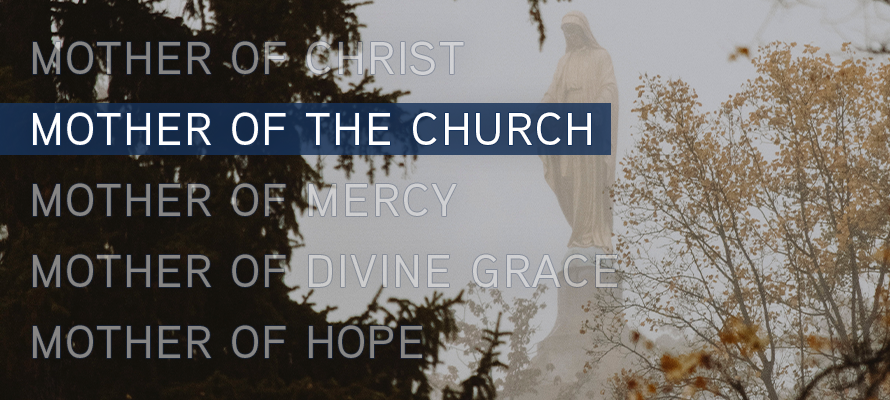
On Monday of this week, we celebrated a world-wide feast for only the fourth time ever – the Feast of Mary, Mother of the Church. Though the idea and basic theology of Mary as Mother of the Church have been around since at least the 4th century, it wasn’t until 2018 that Pope Francis elevated this commemoration to the level of a feast day and fixed its day of celebration on the first Monday following Pentecost.
St. Ambrose, Bishop of Milan, was one of the first to speak of Mary in this manner in the 4th century. Perhaps his most famous student, St. Augustine wrote copiously of Mary, including in his work “Of Holy Virginity.” While talking about Mary as the virgin Mother of Christ, he explained that she is also the mother of the members of the Church as they are all members of Christ’s Body. “She (Mary) is the mother of the members of Christ because she cooperated by her charity, so that faithful ones, members of the Head, might be born into the Church.” (De sancta virginate, 6)
Not long after St. Augustine wrote of her, St. Leo the Great said of Mary in a 5th century Christmas sermon, “the birth of the Head is also the birth of the body.” Since Christ is the Head of the Church and the Body of Christ is the Church, as Mary gave physical birth to Christ, so, too, did she give spiritual birth to the Church. And hence, the title of Mother of the Church.
More recently, in 1964, Pope St. Paul VI officially bestowed the title of Mother of the Church upon Mary at the close of the third session of Vatican II and established a votive Mass for the feast. In his speech, he declared, "For the glory of the Virgin and our consolation, we proclaim Mary the Most Holy Mother of the Church; that is, the Mother of the whole People of God, both the faithful and the pastors." Pope St. John Paul II followed in his predecessor’s footsteps by espousing this title of Mary in his encyclical “Redemptoris Mater,” as well as a Wednesday audience, during which he said, “The title ‘Mother of the Church’ thus reflects the deep conviction of the Christian faithful, who see in Mary not only the mother of the person of Christ, but also of the faithful. She who is recognized as mother of salvation, life and grace, mother of the saved and mother of the living, is rightly proclaimed Mother of the Church.”
How can we recognize and honor Mary as Mother of the Church? Well, just like our earthly mothers, our heavenly mother enjoys spending time with her children. Simply asking her intercession, or praying a Rosary can be done anywhere, at any time. Perhaps your home parish or a local church was built in her honor, and you can take a local pilgrimage to pray there. Or plan a journey further afield to one of the numerous Marian apparition sites. We can also follow in her footsteps along her own pilgrimage route – that of visiting her cousin Elizabeth. The Visitation is a feast day we will celebrate next week, and our next blog will explore more of this beautiful celebration of motherhood.




